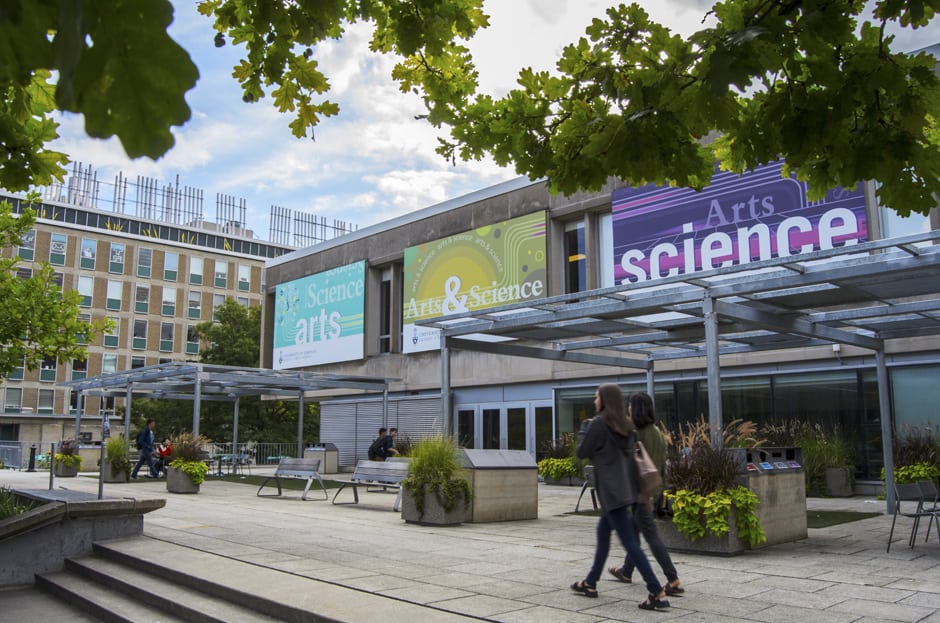There are a total of 335 possible majors, minors, and specialists available to students in the Faculty of Arts & Science. Many of these programs are anomalous, specialized, and very small, which presents a unique set of challenges and opportunities for both faculty and students.
Some students in small programs are criticizing the university for issues with course enrollment, networking, and administration, but others say that the programs provide opportunities that they could not receive in larger ones.
STUDENT BARRIERS
“I am in love with and very passionate about my programs of study,” said Madison Kurchik, a fourth-year student in Aboriginal studies and sexual diversity studies.
However, Kurchik said that she has had to make a number of sacrifices to enroll in the unique combination, because of limited and often inconsistent course offerings.
Kurchik also said that she has had difficulty making long-term connections with professors in the small programs, many of whom are on short-term contract.
“[T]his causes more difficulty in the case of looking for a supervisor for an independent research project,” she said.
Emma Barnaby, a third-year music specialist student who is one of the 22 students enrolled in the Arts & Science music program, also described her experience in the program as full of barriers.
“Even before I started first year, I was on the phone weekly with each… faculty — music and Arts & Sciences — trying to work out scheduling and how I would be allowed into the program,” she said.
Barnaby was required to audition twice in her first year, once for the program itself and again for admittance to the ensemble course. While auditions are routine for music students at the university level, she said that finding information about the auditions was a challenge.
Barnaby added that it is often difficult to be part of a program that doesn’t fit neatly into either the Faculty of Music or the Faculty of Arts & Science.
“The lack of communication between faculties can be problematic…most of the time, schedules end up being fine in the end, [but] the worry about getting to that point can be pretty frustrating,” she said.
Professor Ryan McClelland, associate dean, academic & student affairs at the Faculty of Music, oversees the music major and specialist programs in the Faculty of Arts & Science.
McClelland said that enrollment in music for Arts & Science stands at around 22 people.
“[M]ost students who have studied music intensively before coming to university want to continue performance study at least for a couple of years, [so] the number of students who choose the music major and specialist programs rather than a Bachelor of Music program is quite small,” McClelland said.
McClelland said that the university makes sure that students are aware of the many ways to study music at the university. The music history and culture minor, for example, enrolls about 175 students.
UNIQUE OPPORTUNITIES
Tamara Trojanowska, associate professor of Slavic languages and literatures, said that enrollment numbers are not what makes a particular program impactful, and that smaller programs often present unique opportunities for student success.
“U of T has one of the largest programs in North America in terms of course offerings, comprehensiveness, and number of students served,” said Trojanowska, describing the Polish studies program that she oversees.
“Recent developments in Central and Eastern Europe and their effects on world affairs make academic study of [Poland] especially lively and relevant,” she added.
Similarly, Anna Shternshis, Al and Malka Green associate professor of Yiddish studies, extolled the distinct advantages of taking part in the university’s small Yiddish program.
“We monitor the progress of each student closely and advise them on [the] best possible selection of courses. All Yiddish students are automatically eligible for numerous scholarships and awards designed specifically for them,” said Shternshis.
Shternshis shared Trojanowska’s enthusiasm for the value of her program, but said that the program’s uniqueness and the difficulty of promoting the program mean its reach is not as wide as it could be.
“We are reaching out to Jewish studies students and German department students, but we would like more people to be aware of Yiddish courses,” she said.
For both Barnaby and Kurchik, however, the benefit of taking the courses they love is worth the hassle.
“The opportunity has been fantastic,” Barnaby said.


